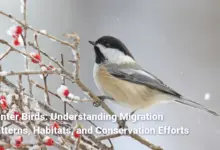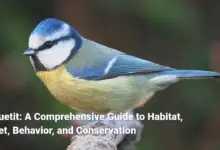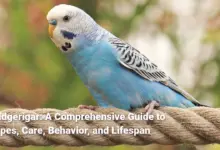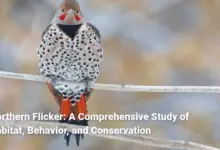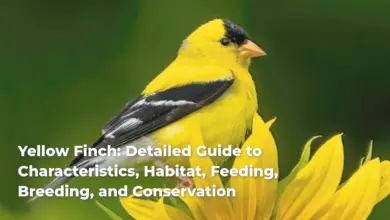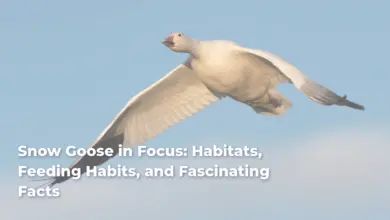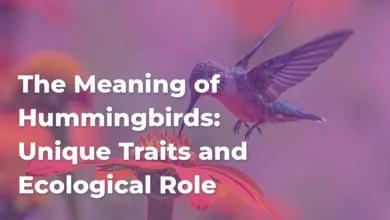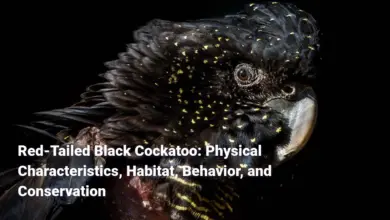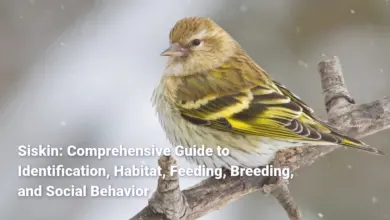Night Parrot: Habitat, Behavior, and Conservation
Uncovering the Secrets of the Night Parrot: Its Habitat, Behavior, and Conservation Challenges
Night Parrot
The Night Parrot (Pezoporus occidentalis) remains one of the most enigmatic species in the avian world, cloaked in mystery and intrigue. Native to Australia, this small parrot, with its elusive behavior and nocturnal habits, has captured the fascination of ornithologists and nature enthusiasts alike. The very name “Night Parrot” conjures an image of a creature that thrives in the shadows, making it both an object of study and a symbol of conservation urgency. Despite its unique adaptations that facilitate life in arid environments, the Night Parrot has faced significant challenges throughout its history, leading to a dramatic decline in its population and distribution.
Revered for its quiet, delicate movements amidst the spinifex grasslands it calls home, the Night Parrot elicits a sense of wonder as if nature itself has crafted a secretive being meant to be discovered only by the lucky few who venture into the dense Australian bush at night. As researchers delve into the depths of its biology, behavior, and ecology, the narrative of the Night Parrot transitions from a long-believed extinct species to one that still whispers its presence in the wilderness. Throughout this article, we will explore the various facets that define this remarkable bird, providing a comprehensive overview of its lifestyle, threats, conservation efforts, and historical significance.
Night Parrot Description
The Night Parrot exemplifies a combination of physical and behavioral attributes that set it apart from its kin. At first glance, one may find it hard to distinguish the Night Parrot from the surrounding vegetation it is as if it has been painted by the elements with hues of green, yellow, and brown, making it the ultimate master of disguise. Its compact body, with robust proportions, complements its short wings, making flight less critical during its terrestrial foraging. The Night Parrot serves as a reminder of nature’s artistry, where form directly aligns with function.
In terms of identification, the Night Parrot measures about 22 to 25 centimeters in length. To further evoke a sense of its mystique, one can compare it to a small, rounded ball of feathers that remains closely knit within the textures of its habitat, rarely revealing its true presence. The blend of yellow hues with intricate black markings makes it not only visually captivating but also perfectly camouflaged in its arid surroundings.
The species differs appreciably from more vibrant parrot relatives, embodying a beauty defined by subtlety rather than flamboyance. Indeed, the Night Parrot urges observers toward deeper appreciation asking us to look beyond the surface and find beauty where it is not immediately visible.
Night Parrot Physical Characteristics
The physical characteristics of the Night Parrot provide insight into its adaptations and behavioral strategies. The small, dumpy body shape serves as a protective feature. While larger birds can rely on the power of flight to evade threats, the Night Parrot has evolved to thrive on the ground, making skilled use of its clumpy environment. Its plumage predominantly consists of mottled green and yellow with fine black markings that allow it to blend seamlessly with the coarse grasses of the Australian outback.

In terms of specific measurements, the average weight of an adult Night Parrot ranges from 100 to 150 grams (about 3.5 to 5.3 ounces), highlighting its petite size while maintaining a stocky and hardy structure and robust body adapted to terrestrial living. For comparison, the vision-reducing endocast features highlight a relatively compressed cranial structure, indicating its specialized adaptations for navigating low-light environments, a characteristic shared by some of its nocturnal avian relatives. This endowments the Night Parrot with remarkable abilities to sense its environment, making it adept in finding food and evading threats.
Its facial morphology further shares features with other ground-dwelling parrots, such as the Ground Parrot (Pezoporus flaviventris), although the Night Parrot is uniquely adapted for life in more arid environments. The stronger feet and short tail enhance its ground-dwelling abilities and enable efficient movement among dense vegetation as it forages for food at night.
Through a combination of shape, color, and structure, the Night Parrot exemplifies how specific adaptations arise directly from environmental pressures, embodying a remarkable story of evolution and survival in Australia’s arid landscape.
Plumage Coloration
Plumage coloration plays an incredibly vital role in the survival of the Night Parrot. This unique species exhibits a pattern that speaks not simply to aesthetics but also to remarkable evolutionary adaptations ensuring its continuation in the wild. The mottled green and brown plumage, with intricate patterns, enhances its camouflage within spinifex grass and other vegetation native to arid and semi-arid regions.
Akin to the intricate artistry of a painter layering textures, the Night Parrot blends hues of yellow-green into its coloration, appearing as part of the landscape. This adaptation minimizes visibility, especially under the cover of night when it emerges to forage; thus, it can effectively evade predators while remaining concealed during the day. In this way, plumage acts as a shield while also embodying the spirit of a creature designed for stealth.
Interestingly, juvenile Night Parrots display a somewhat duller coloration in comparison to their adult counterparts. The softer tones provide an additional layer of protection while they are learning the ropes of survival. Comparisons can be drawn to the young of many species, which often employ more understated camouflage until they mature and require a more advanced cover strategy.
Furthermore, the fine black markings that adorn their body reflect the patterns of the surrounding landscape, almost as if woven into the very essence of their environment. These visual characteristics allow the Night Parrot to blend in perfectly, reinforcing the idea that survival is not merely an act of endurance but also a matter of intelligent adaptation to remain unseen by both prey and predator alike.
Size and Weight
The size and weight of the Night Parrot resonate with its lifestyle, reflecting its adaptation to life on the ground in Australia’s challenging environments. Adult Night Parrots measure approximately 22 to 25 centimeters (about 9 to 10 inches) in length, overweighting between 100 and 150 grams (3.5 to 5.3 ounces). In terms of perspective, think of it as a small, unassuming bird; its compact size serves as an evolutionary advantage in navigating the dense, rugged landscapes of its environment.
Furthermore, the comparison between the Night Parrot’s size and that of other birds in the parrot family emphasizes its unique adaptations. Unlike larger parrot species that soar high in the sky, the Night Parrot’s small stature facilitates its stealthy foraging habits on the ground, primarily within dense vegetation.
Despite its modest size, the Night Parrot boasts robust proportions, which provide it with the strength and agility required to dart through grasslands while avoiding detection. This adaptation underscores the idea that “good things come in small packages,” highlighting the importance of agility and compactness for ground-dwelling species that depend on effective, low-profile movement.
Notably, while behavioral differences between males and females are subtle, both sexes typically share similar sizes, helping to increase their chances of survival in challenging conditions. The balanced proportions between size and weight not only reflect the intricacies of evolutionary processes but also showcase a species finely tuned for existence amid harsh landscapes.
Night Parrot Habitat
The habitat of the Night Parrot is a compelling aspect of its existence. As a nocturnal bird, it has adapted to thrive in arid areas of Australia primarily within dense spinifex grasslands and shrublands, where the vegetation closely resembles a mosaic of colors and textures. These habitats often appear rough and unyielding, yet they hold hidden treasures for a creature accustomed to a life less explored.
The ideal conditions for the Night Parrot include mature spinifex populations that create dense clumps of grass, providing suitable roosting and foraging sites. Much like an artist taking refuge in a secluded studio, the Night Parrot finds shelter among the twigs and grasses, allowing it to thrive while remaining elusive to predators. These ecological niches are often enriched by the presence of salt lakes and floodplains, where the season’s rains could lead to a rapid regeneration of food sources.
The spatial arrangement of its habitat is crucial, as these parrots often cover considerable distances in search of resources. Search strategies resemble intricate dance moves, highlighting the need for connectivity among patches of habitat areas that allow for movement and mitigate interactions with encroaching threats like feral predators.
Night Parrots have demonstrated a remarkable ability to thrive in regions with minimal disturbance, showing that the secure environment of their preferred habitat is not just about cover it’s about the availability of food, water sources, and protection from human influences. This remarkable relationship between habitat and lifestyle offers valuable insights into the complexities of avian adaptations, reinforcing the need to safeguard these critical environments for the Night Parrot’s continued survival.
Night Parrot Geographic Distribution
The geographic distribution of the Night Parrot has undergone significant changes over the years, characterized by both historical breadth and contemporary limitation. Once widely spread across Australia’s arid and semi-arid regions, the Night Parrot now primarily exists in isolated pockets throughout its range. At present, its distribution is confined mainly to distinct sites in southwest Queensland and the northern parts of arid Western Australia, where the parrot has been sighted intermittently since its dramatic decline.
Historically, the Night Parrot maintained a more extensive geographical range, spanning from the Pilbara region to southwestern Queensland, South Australia, and into the Northern Territory. A stark reminder of this historical breadth appears when contrasting modern records with past accounts of sightings and collections, leading to increasing speculation about local extinctions across areas once inhabited.
Specific locations of interest within its current distribution include:
- South-West Queensland: One significantly confirmed site of the Night Parrot.
- Northern Western Australia: A region with six recorded observations since the early 2000s.
The geographical constraints faced by the Night Parrot underscore the fragility of many wildlife populations. The very essence of a species linked to its home its landscape has been irrevocably altered through factors such as habitat loss, predation, and climate variability. As efforts to document new populations continue, the Night Parrot’s situation serves as a potent reminder of how habitats can shape or shatter the existence of an elusive species, emphasizing that ongoing conservation work is essential to elevate its survival prospects.
Preferred Environment
The preferred environment of the Night Parrot embodies a complex interplay of ecological features that cater to its unique needs. As a creature of the night, it seeks out habitats that offer protection, food sources, and breeding opportunities in a delicate balance of survival. Environments characterized by dense vegetation and remote arid zones are paramount to the Night Parrot, with specific ecological components playing critical roles in its overall well-being.
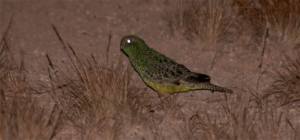
One of the most important aspects of the Night Parrot’s preferred environment is the presence of dense, low-growing vegetation specifically old-growth spinifex. These thick plant stands serve as primary roosting and nesting sites under the cover of darkness, allowing the parrots to move concealed through their territory as they forage for food. Like a safe haven, these habitats protect them from predators while allowing them to thrive.
Furthermore, the availability of food sources, such as grass and herb seeds, determines successful foraging trips. As a granivorous bird that primarily seeks seeds from the grassland, the Night Parrot often traverses varying distances, sometimes up to 9 kilometers from their roost to find the sustenance needed for survival. The spatial arrangement of habitat becomes essential here; the ability to navigate through a landscape rich in resources encourages continued interest in sites where vegetation displays a degree of ecological productivity.
However, environmental factors such as fire regimes and predator pressure also influence the choice of habitat. Minimal predation pressure from animals like feral cats and foxes is a factor in securing preferred sites, allowing these elusive birds to sustain their populations. The aggregation of such habitat features paints an intricate tapestry of ecological beauty, where the Night Parrot can exist hidden from view while still engaging with its surroundings in a vibrant, albeit cautious, manner.
Nesting Habits
Nesting habits are essential for the Night Parrot’s reproduction and survival, providing insights into its unique adaptations to life in arid environments. These elusive birds demonstrate intelligent behavior in selecting habitats that offer dense cover and protection for both breeding and roosting. Old-growth vegetation, particularly in hummock-forming spinifex, is the favored choice for nest sites, resembling a natural fortress for hiding young chicks.
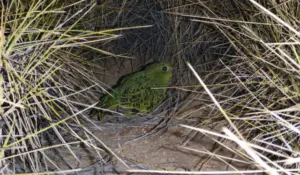
Nest sites are typically located in close proximity to foraging grounds, reinforcing their ecological strategy of minimizing travel distances for feeding while seeking shelter. The Night Parrot’s breeding routine emphasizes efficiency, as that proximity enables both the parents and chicks to access food resources swiftly and safely. This behavioral adaptation resembles a calculated chess move, where every decision is rooted in ensuring the survival of the next generation.
While comprehensive knowledge about their nesting habits remains limited, their strategy clearly leans toward keeping potential nesting sites concealed and safe from disturbance. Given their nocturnal nature, the Night Parrot’s breeding behaviors lean toward reducing risks from predators, often remaining quiet and inconspicuous as they attend to their nests. The use of dense grasses not only offers the necessary cover but also potentially contributes to the temperature regulation of their nests, shielding eggs and hatchlings from harsh environmental conditions.
A further testament to their nesting strategy lies in their breeding seasons, which are often tied to seasonal rainfall patterns. By capitalizing on periods when food availability is temporally abundant, Night Parrots increase the chances of successful chick rearing. These intricate details regarding nesting habits underline the critical need to protect suitable habitats, ensuring continuity for this fascinating species.
Night Parrot Behavior
Behavioral traits of the Night Parrot reveal a creature finely tuned to thrive in its nocturnal existence. Emphasizing its ground-dwelling nature, the Night Parrot is primarily active during the night, exhibiting a range of behaviors designed to help it navigate its environment seamlessly. Unlike many of its more vibrant kin, the Night Parrot thrives in the shadows, emerging to forage under the dim light of the moon.
As a nocturnal species, the Night Parrot typically roosts during daylight hours in the dense cover of vegetation, a strategic choice that allows it to minimize predation risk. The transition from day to night marks a significant shift in activity, as the parrots become more animated, engaging in social interactions while exploring their surroundings. Vocalizations play a pivotal role during these nighttime excursions, with low, two-note whistles and frog-like croaks serving as primary means of communication. Such calls not only help maintain group cohesion but also facilitate mate signaling and territorial marking.
While actively foraging, the Night Parrot exhibits specific patterns that underscore its reliance on ground-level navigation. Foraging travels can take the birds considerable distances as they seek out various seeds found among grasses and herbs. The strategy reflects a well-honed ability to traverse their environment while making use of the resources available, further showcasing the intimate relationship between the Night Parrot and its habitat.
In summary, the Night Parrot’s behavior is characterized by an adept understanding of its nocturnal environment. Its activities, communication methods, and foraging patterns express a harmonious balance between its evolutionary adaptations and the specific demands of its habitat.
Night Parrot Nocturnal Activity
The nocturnal activity of the Night Parrot plays a pivotal role in shaping its lifestyle and survival strategies within the Australian wilderness. Being primarily active at night enables this unique parrot to take advantage of the relative calm and reduced predation risks associated with darkness. Dusk marks the beginning of their activity, as they emerge from their roosting sites to forage for seeds and socialize within their flocks.
Foraging behavior is central to the Night Parrot’s nightly activities. Studies indicate they are adept at navigating their landscape, often traveling significant distances up to 9 kilometers from their roosts to seek food resources. This distance reflects a necessity, highlighting the importance of understanding their movement patterns and dietary needs to identify crucial habitats for conservation efforts. It’s as if these small birds choreograph their nightly dance, rhythmically moving through the dense grasslands in search of sustenance while avoiding potential threats.
The low-light conditions of twilight and moonlit nights provide a unique setting for the Night Parrot’s social interactions. Vocalizations, including low whistles and croaks, form an integral part of their nightly behavior, facilitating contact between individuals while marking territorial presence. The ability to communicate in the dark highlights their reliance on auditory cues in a world where vision is limited, emphasizing how specialized adaptations shape their interactions within a challenging environment.
In essence, the Night Parrot’s nocturnal patterns provide profound insights into how avian behavior adapts harmoniously with the demands of their habitat. These adaptations serve as a reminder of the intricate relationship that exists between lifestyle, environment, and survival.
Feeding Patterns
Feeding is a critical aspect of the Night Parrot’s biology, encapsulating its dietary preferences and the strategies it employs to secure nourishment. While they are primarily granivorous, the Night Parrot’s diet is diverse and closely linked to the availability of seeds from grasses and various herbs in their arid habitat. The presence of grassland and herbaceous plants reflects another layer of ecological interdependence, emphasizing the need for healthy ecosystems.
Primarily reliant on the seeds of grasses particularly those from the species of Triodia Night Parrots actively forage for food during their nocturnal activities. They typically seek out areas where larger seeded grass and forb species are prevalent, allowing them to maximize their foraging efficiency. The allure of the seeds lures the parrots into open semi-arid grasslands, where they employ a methodical approach to feeding.
Night Parrots exhibit remarkable adaptability in their foraging behavior, often traveling long distances in search of essential nutrients. Research indicates that during periods of food scarcity, they skillfully adapt their foraging strategies, enabling them to move from resource-rich sites to areas where vegetation may be temporarily abundant, enhanced by seasonal rains.
In addition to grass seeds, the Night Parrot’s diet may also encompass other plant materials, including fruits and flowers, further fortifying its nutritional intake. The ability to transition between different food sources highlights their flexibility, an essential characteristic for survival in an unpredictable environment. By embracing the variety available to them, Night Parrots exhibit a dynamic relationship with their habitat and an understanding of the need to diversify in response to biological demands.
Vocalizations
Vocalizations serve as a vital communication system for the Night Parrot, reflecting their unique adaptations for life in the shadows. Unlike the vibrant calls of many diurnal parrots, the Night Parrot’s vocalizations are characterized by low, two-note whistles and frog-like croaking sounds that blend seamlessly into the night. These calls hold both social and functional importance, serving various roles within their complex interactions.
Primarily, vocalizations facilitate contact between individuals, marking territories, and signaling presence among mates or family members during their nocturnal activities. The subtleness of their calls allows them to communicate without drawing undue attention from potential predators, demonstrating an evolutionary strategy finely tuned to the challenges they face.
Vocalizing at night, when activity levels peak, enhances their ability to establish social bonds within groups, ensuring cohesion while also enabling efficient foraging. The Night Parrot’s calls can be likened to soft whispers exchanged in a crowded room delicate yet powerful in conveying meaning and fostering connection.
Recent studies suggest Night Parrots might possess a more complex vocal repertoire than previously understood, sharing similarities with other ground dwellers in the parrot family. Such insights open new avenues for research, emphasizing the need to explore vocal communication as an integral part of understanding their behavior and ecology.
Through these vocalizations, the Night Parrot expresses a continuous dance of relationships, adapting its interactions within a framework that prioritizes survival while preserving its mysterious aura in the darkness of the night.
Night Parrot Conservation Status
The conservation status of the Night Parrot is a pressing concern, reflecting a dramatic narrative of decline coupled with the urgency of protective measures. Classified as Endangered by the IUCN Red List, the Night Parrot has seen a significant reduction in population numbers and distribution over time. Once thought to be extinct, its existence has since been validated, but the population dynamics remain dire.
Current estimates posit that the Night Parrot population likely ranges between 50 and 249 mature individuals, highlighting a precarious situation where each individual becomes increasingly vital to the future of the species. Targeted acoustic surveys reveal the troubling reality that no more than 30 individuals have been identified consistently since 2013, raising further alarm among conservationists. The population’s isolation and continuous fragmentation underscore the urgent need for dedicated conservation action.
The decline in numbers can be attributed to several interacting threats, including habitat degradation, predation from invasive species, and climate change impacts. As the Night Parrot’s habitats face the pressures of land management practices and urban encroachment, the fight for survival becomes increasingly challenging. Conservation efforts are thus essential aiming not only to protect remaining populations but to restore and maintain the ecological balance that is vital for their long-term viability.
As such, initiatives targeted at habitat protection and the management of invasive predator populations resonate as pivotal components of the conservation strategy. Without immediate action, these small yet resilient birds risk disappearing once again from the landscape they have inhabited through centuries, reinforcing the narrative of precarious survival woven within Australia’s ecological fabric.
Night Parrot Population Estimates
Population estimates for the Night Parrot remain a subject of concern, charting a path characterized by ups and downs throughout its conservation history. As of now, current estimates place the population of this elusive species between 50 and 249 mature individuals, rendering it one of the most critically endangered birds in Australia. A steady decline in sightings over the years suggests that there may only be approximately 200 individuals actively persisting within select regions while some subpopulations could consist of no more than 30 individuals.
Efforts to establish more precise population estimates have proven challenging, owing largely to the Night Parrot’s secretive nature and the difficulty in accessing its preferred habitats. Acoustic surveys conducted since 2013 have recorded fewer than 30 individuals through spanning locations in the Northern Territory and Western Australia, emphasizing the reality that these rare parrots are dispersed across multiple fragmented areas.
This trend of diminishing sightings mirrors similar patterns observed historically, notably between the early 1900s to the modern rediscovery in 2013. Each confirmed sighting embodies a beacon of hope, leading to greater efforts in targeted conservation but simultaneously drawing attention to the pressing concern about population permanence.
Consolidated estimates are crucial as they not only inform conservation strategies but also drive the urgency of immediate action in safeguarding the Night Parrot’s future. Continuous and meticulous tracking of remaining populations will enhance our understanding of their distribution and breeding dynamics, ultimately improving conservation outcomes for this enigmatic species.
Threats to Survival
Numerous threats conspire to place the Night Parrot on the precipice of extinction. Among these threats, predation by invasive species stands out as a formidable hurdle in the bird’s fight for survival. Feral cats (Felis catus) and foxes (Vulpes vulpes) pose significant risks, preying on both adult and juvenile Night Parrots. This predation has notably hindered population recovery and recruitment, further aggravating an already vulnerable situation.
Additionally, habitat degradation emerges as another critical concern. The ecosystems that sustain the Night Parrot have faced an increasing burden from livestock grazing, invasive plants, and urban encroachment. The loss of vegetation cover essential for nesting, foraging, and protection leads to increased exposure to predators and the deterioration of food resources. Here we see a direct link between land management practices and species survival, suggesting a need for intervention at various levels.
Moreover, climate change has introduced additional challenges, exacerbating conditions through rising temperatures and unpredictable weather patterns. Such climate variability can further diminish essential resources such as water and food, presenting within the context of an already precarious population that cannot afford further strain.
Understanding other threats, including habitat destruction linked to land-use patterns and the pressures of human activity such as illegal birdwatching reinforces the intricate relationship between conservation practice and the survival of endangered species like the Night Parrot. All these factors contribute to a diminishing environment, compelling conservation advocates to rally around effective management strategies that encompass habitat protection, species monitoring, and rigorous control of invasive populations.
Conservation Efforts
Conservation efforts aimed at preserving the Night Parrot have taken on a sense of urgency, aimed at combatting the multifaceted threats that now define the species’ existence. Numerous initiatives are currently in place, employing holistic strategies that tackle habitat management, species monitoring, and community involvement.
One vital aspect involves implementing targeted management strategies designed to mitigate the impact of feral predators. Ongoing control programs seek to reduce populations of invasive species that pose significant risks to the Night Parrot’s survival. Coupling this effort with habitat restoration strategies ensures the maintenance of dense vegetation essential for nesting and foraging.
Moreover, significant research initiatives have been undertaken since the rediscovery of the Night Parrot in 2013, focusing on understanding its ecology, behavior, and population dynamics. By gathering critical data from known populations, conservationists can develop informed strategies that facilitate effective monitoring and ensure that interventions are both timely and relevant.
Fire management programs continue to play an important role as well, recognizing that appropriate fire regimes are crucial for protecting the old-growth habitats that support Night Parrots. By employing strategic fire management that respects ecological balances and minimizes disturbances to natural habitats, it becomes possible to ensure the survival of their nesting areas.
Collaboration between conservation authorities, landholders, and local communities is paramount. Engaging traditional landowners and fostering partnerships cultivates a sense of stewardship among local populations. Enhancing awareness of the Night Parrot’s plight and mobilizing community efforts toward conservation ensures that all stakeholders play a role in securing a future for this unique parrot.
Night Parrot Historical Observations
The historical observations of the Night Parrot (Pezoporus occidentalis) create a compelling narrative that paints a picture of mystery intertwined with scientific intrigue. Between prominent sightings that occurred in the early 20th century, particularly from 1912 to 1990, a general sense of skepticism arose regarding the continued existence of this elusive bird. Confirmed records dropped notably, prompting speculation over its potential extinction.
During this time, sporadic observations were made mainly by dedicated ornithologists and individuals well-acquainted with the bird’s habitat. One noteworthy account is attributed to C.H. McLennan, who collaborated with Aboriginal informants to document sightings, yielding insights into the bird’s calls, habitat preferences, and behaviors. Such accounts have become foundational in understanding the ecology of the Night Parrot, even as they illuminated its near-mythical status crafted by its rarity.
Notably, the early 1990s marked renewed interest in the species when two deceased specimens emerged one as a road kill, and another discovered in 2006, underscoring the challenges in pinning down the bird’s elusive presence. It wasn’t until 2013 that significant evidence of the Night Parrot’s survival was captured with photographs and video footage.
The trajectory of historical observations reflects the intersection of belief, skepticism, and scientific inquiry. With recent technological advancements and targeted surveys expanding our understanding, researchers are signaling a shift from historical accounts of mystery to a more grounded approach that emphasizes the necessity of informed conservation efforts moving forward.
Night Parrot Significant Sightings
Significant sightings of the Night Parrot serve as crucial milestones in understanding its distribution and survival. Since the groundbreaking imagery captured in 2013, which confirmed that the Night Parrot still graces the sparse vegetation of Australia, experts have undertaken concerted efforts to locate this elusive bird in the wild.
One notable sighting occurred in July 2013, when naturalist John Young successfully documented the bird in southwest Queensland. This rediscovery sparked renewed interest among conservationists as it shifted perceptions from potential extinction to focusing on the nuanced challenges surrounding this rare species.
Subsequent sightings have since taken place across specific regions within its known habitats, notably within six recognized areas across the northern part of Western Australia and southwest Queensland. These locations hold particular importance for conservation efforts as each confirmed observation contributes to the collective understanding of the Night Parrot’s remaining distribution and ecological dynamics.
Investigations into these sightings fuel the conservation narrative, weaving together stories of successful monitoring and ensuing conservation actions efforts that emphasize protection and habitat resiliency. The significance of each sighting extends beyond mere data; it deepens the connection between species and the natural world, reminding us of the inherent value of preservation and the mysteries that dwell among us.
Record of Extinction Speculation
Historically, the narrative around the Night Parrot has been punctuated by speculation surrounding its extinction, fueled by prolonged gaps in confirmed sightings. After being described scientifically by John Gould in 1861 and subsequently becoming a subject of intrigue, the lack of concrete evidence between 1912 and 2013 led to a widespread belief that the species may no longer exist.
The early 20th century, marked by scant observations and undoubted myth, created an air of uncertainty regarding the Night Parrot’s fate. With so few verified records, the whispers of extinction loomed large, casting a shadow of doubt over its continued survival. A series of unconfirmed reports emerged sporadically over the decades, yet persistent skepticism overshadowed the narrative, leaving it suspended between belief and doubt.
The pivotal moment in this story occurred in 2013, when newfound evidence of the Night Parrot’s existence was brought to light. Rediscovery sparked excitement within the ornithological community, serving to reinvigorate conservation conversations around the species a reset of possibilities within a previously bleak outlook. This shift moved discussions from questioning whether the species was extinct to actively seeking to understand its population dynamics and habitat requirements.
As research and conservation efforts progress, the record of extinction speculation surrounding the Night Parrot serves as a cautionary tale about the challenges inherent to wildlife conservation. It underscores the need for ongoing vigilance, dedication to habitat protection, and proactive strategies to ensure that rare species are allowed to thrive in environments where they belong.
Recent Discoveries
Recent discoveries surrounding the Night Parrot illuminate not only its existence but also remarkable insights into its ecological adaptations and evolutionary history. The rediscovery in 2013 provided an impetus for a series of investigative studies aimed at better understanding this elusive bird and the habitats that support its survival.
Noteworthy advancements emerged through the application of cutting-edge technology, such as high-resolution CT scans of preserved specimens. Such studies have revealed adaptations including an asymmetrical skull structure and enlarged ear chambers, enabling the Night Parrot to navigate its arid habitat effectively despite limited night vision. This understanding sheds light on how morphological features directly link to their lifestyles, illuminating the intricate dance of evolution at play.
Assorted research initiatives also aim to unravel the Night Parrot’s behavioral patterns and dietary habits, revealing a species finely attuned to seasonal variability. The continued exploration of its ecology has widened our perspectives on its symbiotic relationships within the grassland ecosystems it inhabits, reinforcing the critical role it plays in seed dispersal and plant dynamics.
These recent discoveries raise awareness not only about the Night Parrot’s rare existence but also about the broader ecological consequences surrounding its conservation. Ongoing efforts to protect habitats and ensure the availability of resources underscore the need for sustained research, as the findings gathered will significantly influence conservation actions critical to safeguarding this extraordinary species for future generations.
Night Parrot Related Species
The Night Parrot (Pezoporus occidentalis), as part of the parrot family (Psittacidae), shares relationships with several other species, most notably its relatives within the ground parrot lineage. Other ground parrot species, including the Western Ground Parrot (Pezoporus flaviventris) and Eastern Ground Parrot (Pezoporus wallicus), exhibit similar behavioral and ecological characteristics.
These related species also prefer dense vegetation as a habitat and share a penchant for ground-dwelling lifestyles, facilitating their adaptation to specific ecological niches. This common thread embodies the intricate tapestry of avian evolution, where environmental factors progressively characterize behavioral traits and lifestyle choices.
In considering genetic relationships, it becomes evident that the Night Parrot shares a deeper connection with these ground-dwelling relatives. Research examining genetic markers in related species helps inform conservation strategies and suggests that genetic diversity plays a crucial role in sustaining healthy populations.
By examining these relationships, researchers can enrich the understanding of ecological interactions, potentially revealing insights that extend beyond individual species to encompass broader ecosystem dynamics. The exploration of related species provides an important framework for not only highlighting the Night Parrot’s unique attributes but also for enhancing conservation efforts directed at preserving ground-dwelling parrots in Australia.
Night Parrot Comparison with Ground Parrots
When contrasting the Night Parrot with other species in the ground parrot group, particularly the Western Ground Parrot (Pezoporus flaviventris) and Eastern Ground Parrot (Pezoporus wallicus), a series of similarities and differences arise in terms of behavior, habitat preferences, and dietary habits.
Behavior
The Night Parrot is predominantly nocturnal, existing primarily as a silent observer roosting during the day and becoming active under the cover of night. In contrast, the Western Ground Parrot is diurnal, conducting its feeding primarily during daylight hours. This behavioral distinction creates a fascinating overlap in how each species engages with its environment while simultaneously adapting to the risks posed by predation.
Habitat
Both the Night Parrot and its ground parrot relatives display preferences for specific habitats characterized by dense vegetation. While the Night Parrot is linked with arid regions dotted with spinifex grasslands, Western Ground Parrots predominantly inhabit heathlands along the southwestern coastline. Each demonstrates a keen ability to fortify themselves within their distinctive environments while relying on the cover and protection offered by dense foliage.
Diet
Dietary habits reveal further divergence and similarity. The Night Parrot’s diet primarily emphasizes seeds from grasses like Triodia, while ground parrots incorporate a broader range of plant materials, including seeds, flower buds, and leaves. This dietary flexibility underscores the necessity for diverse ecological frameworks to support ground-dwelling parrot species across different habitats.
Ultimately, while there are evident behavioral and lifestyle overlaps among the Night Parrot and its cousins in the ground parrot family, these differences point toward the unique adaptations cultivated through different evolutionary paths. These distinctions shed light on how specific ecological functions manifest within their environments, guiding conservation efforts tailored to address the unique needs of each species.
Genetic Relationship
The genetic relationship between the Night Parrot and other parrot species provides valuable context for understanding its evolutionary adaptations and ecological roles. While the specifics of its genetic connections may not be as extensively documented, studies indicate that the Night Parrot likely shares a significant lineage with other ground-dwelling parrots, including the Kākāpō (Strigops habroptilus) from New Zealand.
Genomic studies reveal interesting insights into these connections, highlighting similar adaptations in morphology and behavior that emerge uniquely along evolutionary lines. Both the Night Parrot and Kākāpō have evolved various features that enable effective navigation and survival in their respective environments, emphasizing their specialized roles within ground-dwelling avian taxa.
With conservation strategies increasingly prioritizing genetic diversity, understanding these relationships becomes critical. Insights into the genetic health of endangered species lead to implications on genetic rescue and translocation efforts, focusing on bolstering populations through genetic exchange while also safeguarding overall biodiversity.
The interplay among genetic relationships reminds us of the fragile web that connects all living beings within ecosystems. As we seek to protect individual species, we must also highlight the importance of preserving genetic diversity across related taxa to fortify resilience in the face of environmental challenges.
Ecological Role
The ecological role of the Night Parrot is integral to maintaining the health and stability of the ecosystems in which it dwells. As a ground-dwelling bird, the Night Parrot contributes significantly to seed dispersal and ecosystem dynamics within the arid regions of Australia.
By foraging on seeds of grasses and herbs, the Night Parrot plays a pivotal role in shaping plant community structures. This interaction between the parrot and its habitat emphasizes a cyclical relationship where the parrot not only sustains itself through feeding but simultaneously aids in promoting plant regeneration and diversity.
Moreover, the Night Parrot’s presence accounts for broader ecosystem implications, as various species rely on the same plant communities for their survival. Its behaviors thus forge connections among various elements of the environment, reinforcing the complexity of ecological systems.
As an indicator species, the health of Night Parrot populations can reflect overall ecosystem health, making their conservation vital to broader strategies aimed at environmental protection. Vigilance in safeguarding habitats, along with the Night Parrot’s ecological integrity, contributes to the preservation of the intricate relationships sustaining these arid ecosystems.
Through understanding the ecological role of the Night Parrot, we recognize how vital it is to not only focus on individual species but also to appreciate the interconnected tapestry of life within our global environment. Conservation efforts aimed at the Night Parrot represent a broader commitment to preserving biodiversity and ecological balance.
In conclusion, the Night Parrot embodies a remarkable story of survival, resilience, and ecological significance amidst the unique landscapes of Australia. As researchers and conservationists continue to uncover its mysteries, the focus remains steadfast on safeguarding this elusive species against the myriad challenges it faces. The narrative of the Night Parrot serves as a powerful reminder of the fragility of our natural world and the urgent need for dedicated efforts to protect and preserve the biodiversity that enriches our planet.

